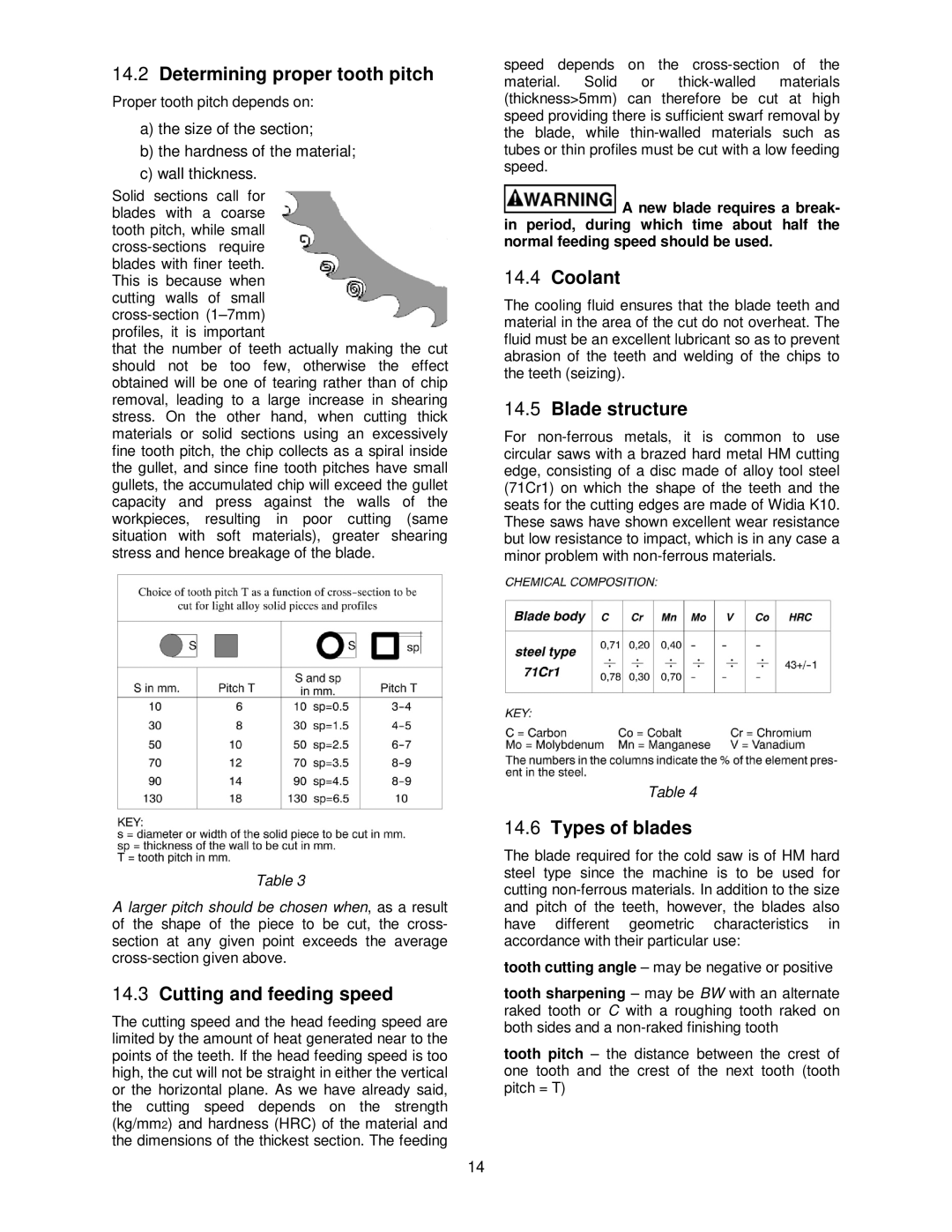CS-315, CS-275 specifications
Jet Tools has a long-standing reputation for delivering quality woodworking and metalworking machinery, and their CS-275 and CS-315 bandsaw models exemplify that commitment to excellence. Designed with both professional woodworkers and hobbyists in mind, these saws are engineered to provide precision, power, and ease of use.The CS-275 features a robust design that includes a heavy-duty cast iron frame providing stability and reducing vibration during operation. This enhances the accuracy of cuts. With a 2.5 HP motor, the CS-275 delivers ample power for most woodworking tasks, enabling users to tackle various materials, from softwoods to hardwoods. Its easy-to-read scale and quick blade change system make blade adjustments seamless. The saw blade can accommodate a range of widths, allowing users to switch between intricate cuts and larger operations without hassle.
On the other hand, the CS-315 takes it a step further with a 3 HP motor, catering to those who need more power for demanding projects. This model boasts an extended cutting capacity, which is perfect for larger workpieces. The dual table support system ensures maximum stability, while the integrated dust collection port helps maintain a clean work environment by minimizing debris and sawdust.
Both models incorporate Jet's advanced technology that prioritizes user safety and comfort. Features such as an oversized handwheel and a precision tensioning system allow for easy adjustments of the blade, ensuring optimal performance. The CS-275 and CS-315 are equipped with high-quality bearings and a precision ground cast iron table that provides a smooth surface for cutting, enhancing performance and longevity.
Additionally, these bandsaws share a common feature: a large viewing window that allows users to monitor their cutting line easily. This ensures that every cut is precise and increases overall productivity. The saws also come with a solid standard warranty, underscoring Jet Tools' confidence in their durability and quality.
In summary, whether you choose the CS-275 or the more powerful CS-315, Jet Tools offers robust construction, innovative technologies, and user-centered design. Both models are excellent additions to any workshop, providing reliability and performance that professionals and enthusiasts alike will appreciate.

